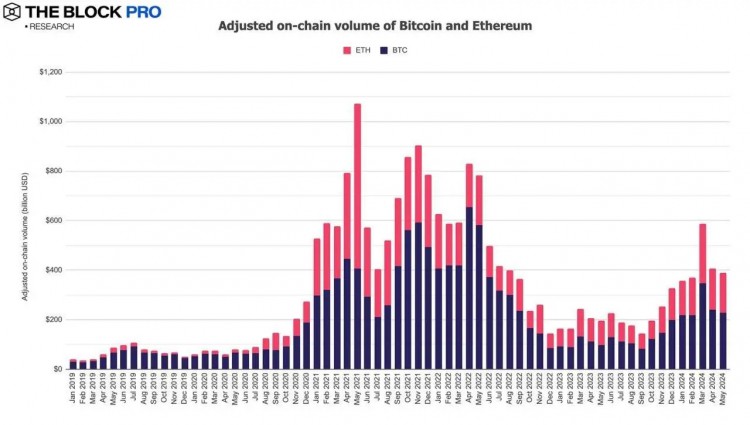摘要:这 260 封电子邮件共 14 万字——相当于一本长篇小说的长度——但比特币的创造者中本聪和早期开发者 Martti Malmi 之间的在线通信包含了有关比特币早期的主要历史信息的 “宝库” 。马尔米上周发布的一些材料并不新鲜。例...
这 260 封电子邮件共 14 万字——相当于一本长篇小说的长度——但比特币的创造者中本聪和早期开发者 Martti Malmi 之间的在线通信包含了有关比特币早期的主要历史信息的 “宝库” 。
马尔米上周发布的一些材料并不新鲜。例如,它包括以前见过的比特币“问答转储”的片段,因此在声称新的启示之前必须谨慎行事。
尽管如此,从 2009 年 5 月到 2011 年 2 月主要是 Malmi 和 Satoshi 之间的电子邮件往来,可以说比以前普遍看到的更加随意和自然。
他时而有先见之明,时而天真无邪——甚至早在 2009 年就预计比特币最终可能会因为其能源密集型工作量证明验证机制而面临一些生态或环境问题,例如:“讽刺的是,如果我们最终不得不在两者之间做出选择经济自由和保护,”他说。
但他似乎并没有意识到比特币的扩容挑战。在 2009 年 5 月 3 日的电子邮件中,他写道:
为什么信件现在才出现?正如他在 GitHub 发帖中解释的那样,马尔米“之前对分享私人信件感到不舒服”,但他决定这样做是因为“2024 年在英国进行了一次重要审判,我是证人”,指的是加密货币群体交易所和开发商对克雷格·怀特提起诉讼,他本人自称是中本聪。
上周,Cointelegraph 广泛征询了业内知识渊博的消息人士对这一电子邮件热潮的反应,以及它是否增进了我们对比特币历史及其难以捉摸的创始人的理解(如果有的话)。
Jeremy Clark 与 Arvind Narayanan 合着了 2017 年一篇关于比特币前身的论文,该论文经常被引用。有人问他是否在电子邮件中发现了任何令人惊讶的东西。
最近:(智能)合约谋杀案:Ari Juels 出版加密惊悚小说
克拉克告诉 Cointelegraph,“这种语气比中本聪在邮件列表(一份历史性文件)上的帖子更加对话和非正式”,但他警告说,发布的电子邮件中也穿插着之前公开的早期电子邮件的引用。因此,有些引述是新的,有些则不是,这可能会令人困惑。
例如,在第 3 封电子邮件(2009 年 5 月 3 日)中,中本聪提到了椭圆曲线数字签名算法 (EC-DSA),这是一种加密安全的数字签名方案:“但是 EC-DSA 无法像 RSA 那样加密消息,它只能用于验证签名。” 克拉克指出,这并不新鲜,但他评论道:
“Strictly speaking, EC-DSA cannot do encryption, but an EC-DSA public key can do encryption — for example, with Elgamal encryption — so this suggests to me that Satoshi is not a cryptography expert.”
Clark added: “I say this with the greatest respect to the person who wrote one of the most highly cited cryptography papers of all time.”
Now an associate professor at Canada’s Concordia University, Clark was struck by Satoshi’s language, which isn’t always “woke.” At one point, Bitcoin’s creator says: “I know this sounds really r*tarded.” [email #24].
“That didn’t age well,” Clark said.
It actually contrasts with “his hesitancy to swear generally,” continued Clark. For example, “‘Sourceforge is just so darn slow.’ [email #45] ‘I’ve tested the heck out of it [email #44].’”
“Maybe he grew up religious? Southern USA? A lot of the other slang he uses — sweet, newbies, suck, screwed, goofball — makes me think he isn’t super old. He talks like I did then,” said Clark, who was born in the early 1980s.
Satoshi’s language drew comments from other readers. In email #117, Satoshi uses the term “Disco/web-1990’s.”
“From this, it can be concluded that he was an active user of the internet in the 1990s,” Jan Lansky, who heads the department of computer science and mathematics at Prague’s University of Finance and Administration, told Cointelegraph.
In email #118, Satoshi uses the keyword “loop” in the source code. “This keyword is used very rarely in programming languages,” Lansky continued. Indeed, Lansky did a search and found that it was used in the Forth programming language, which was also a stack-based model like Bitcoin’s scripting language. Lansky added:
“The Forth language was used in the 1970s and 1980s, especially in embedded systems or telecommunications, [otherwise] it was never widely used.”
So perhaps Satoshi worked in the telecom industry?
Satoshi’s day job?
Maybe Satoshi’s regular work didn’t even involve programming. “It’s good to be coding again!" Satoshi proclaims on Oct. 16, 2009 (email #35).
Clark said, “Maybe I’m reading too much into this, but he doesn’t say good to be coding on Bitcoin again, just good to be coding again,” adding:
“This makes me wonder if his day job — the one that he gets too busy with to work on Bitcoin in [the Malmi] emails — does not involve coding.”
It is often asked why Satoshi walked away from Bitcoin, passing the baton to Gavin Andresen in early 2011. Maybe a demanding “day job” had something to do with it. If so, this makes for a less dramatic story than some other speculation, such as the United States Central Intelligence Agency (CIA) targeting Bitcoin’s inventor.
“I’ve also been busy with other things for the last month and a half,” says Satoshi on May 16, 2010, in email #192, “I just now downloaded my e-mail since the beginning of April [...] I’m not going to be much help right now either, pretty busy with work, and need a break from it after 18 months development.”
According to Clark, “This is the best picture of why Satoshi left” the scene. It had nothing to do with the CIA or other sinister happenings: “He just burned out.”
As Bitcoin became more popular, Clark further theorized, “Every break you take results in a bigger stack of things to go through, which makes you more likely to put it off.” Eventually, Satoshi “just gave up and ghosted the project.”
Once Satoshi decides to withdraw from day-to-day Bitcoin-related activities, Malmi plays a role in finding his replacement: “Should we make a recruitment thread on the forum?” he asks Satoshi on Dec. 3, 2010 (email #240).
Satoshi answers (email #241) the same day: “It should be Gavin [Andresen]. I trust him, he’s responsible, professional, and technically much more Linux capable than me.”
Three days later (email #242), Malmi responds: “Ok, I’ll ask him.”
Satoshi vs. Chaum
Martien van Steenbergen appears in email #3 asking about Bitcoin’s new payment system: “Is this akin to David Chaum’s anonymous digital money?”
Satoshi labors to explain the differences between his invention and Chaum’s DigiCash, adding:
Did Satoshi have a point? Did he foresee how a decentralized currency would prevail over all the centralized money experiments?
“Chaum’s centralized approach suffers from a single point of failure, its center,” Steenbergen, a senior agile and lean management trainer, coach and product owner at AardRock in the Netherlands, told Cointelegraph. “So Satoshi has a point there. What I do not like about Bitcoin is that, over the years, you have witnessed its enormous energy hunger to mine the coins. Also, I despise its concentration of wealth. The world needs a distributed, safe, secure, open [source], and cheap system that favors all, not just a few.”
Lansky added: “At that time, there were many centralized systems of electronic money, which failed one by one precisely because of the failure of the central authority. Satoshi also had historical knowledge of state financial systems, which, on average, fail after decades.”
The matter of Bitcoin’s potential energy profligacy is also addressed in the emails, though in 2009, Bitcoin (BTC) mining’s electrical usage was minuscule. Today, by comparison, Bitcoin’s annualized power consumption is comparable to that of Ukraine, and its carbon footprint is roughly equivalent to that of Romania, according to Digiconomist.
在第 3 封电子邮件中,中本聪评论了安全性(由比特币的能源密集型工作量证明验证机制提供)与节能之间潜在的令人不安的权衡。正如上面引用的,他指出有一天必须“在经济自由和保护之间”做出选择的讽刺。
中本聪继续说道,“即使它(即比特币)确实增长到消耗大量能源,我认为它仍然比它所取代的劳动力和资源密集型传统银行活动更少浪费。”
也许中本聪比我们想象的“更环保”?
牛津大学牛津互联网研究所经济社会学和数字社会研究教授 Vili Lehdonvirta 并不这么认为。“它绝对不是很绿色。这是一种‘怎么样’的争论,但即使如此,它也失败了,因为加密货币行业最终造成了自己的劳动力和资源浪费,包括大量的垃圾邮件,”他告诉 Cointelegraph。
揭开中本聪的面纱:这重要吗?
总的来说,这些电子邮件是否让我们更接近了解比特币发明者的真实身份?如果不是,我们应该关心吗?
“他们帮助淘汰候选人,这就是他们出现在审判中的原因,”克拉克告诉 Cointelegraph。“也许有一些小线索,但我的观点是,没有足够的关于中本聪的公开事实,无法根据我们所掌握的信息来识别他的身份。”
“他绝对不是很日本人,”Lehdonvirta 告诉 Cointelegraph。“但我们已经知道了。”
近期:比特币减半对比特币挖矿中心化意味着什么
我们可能永远不知道中本聪的身份,也许这并不重要。制度才是最重要的——它超越任何个人、公司或政府。
或者正如密码学家 Michael Clear在 2011 年告诉《纽约客》的那样:“任何人都可以审查代码,而且网络不受任何一个实体的控制。这就是激发人们对系统的信心的原因。”
也许这就是中本聪可以走开的原因。




